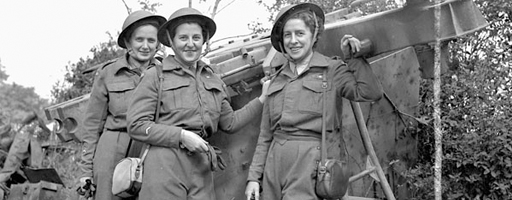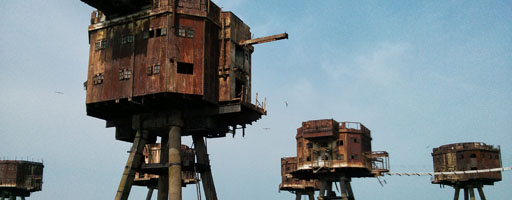Worthing And World War Two
29 Jun, 2015

Even before the war in Europe officially ended in May 1945, houses prices in Worthing were picking up. Five years earlier, with the very real threat of a German invasion, prices had collapsed and many estate agents went out of business. Wealthier homeowners fled, leaving hundreds of desirable detached properties abandoned and boarded up.
In 1945, property sales were booming, with prices doubling on pre-war levels. One Worthing estate agent reported that: “there has been a spreading out of the London suburban population, and Worthing, popular at any time” was becoming the chosen residential destination for better off, older couples, seeking a new life by the sea.
Another local estate agent took up the theme, telling the Worthing Herald that, “the crying need is for houses of up to £2000 to £2,500., “adding that, “prices for all types of property are excellent for the vendor.”
There is a story of a shrewd local businessman, who, in the dark days of 1940, purchased beautiful homes at Goring for as little as £200 or £300, homes that were now worth ten times as much.
On the other side of the coin, Worthing had its fair number of homeless people and squatters. Even Castle Goring on the Arundel Road, was taken over by squatters. Soldiers and sailors returning from war demanded decent homes for themselves and their families. Worthing took the lead in council-house building, with hundreds of new homes being built on the ‘Field Place Estate,’ later renamed ‘Maybridge.’ The Council compulsorily purchased empty properties, providing homes for the dispossessed.
As the summer of 1945 approached, complaints started to be heard from local businesses that the Council was not moving fast enough to remove the large reinforced concrete anti-tank blocks that stretched along the seafront. Whereas other resorts, including Brighton had blown their blocks apart by drilling into them and placing an explosive charge inside, Worthing, dithered. Eventually, the Council hired mobile cranes to lift the blocks off the seafront and place them into waiting lorries. Over a period of weeks, hundreds of blocks were driven up to a large pit near Hillbarn Golf courseand buried. They remain there to this day.
Vast swathes of barbed wire also had to be removed. Communal air raid shelters (such as the one built on the Steyne) had to be demolished as did various pill boxes situated around the town. Best known of these fortifications was just south of the old Town Hall in South Street that had been built (not very convincingly) to look like a shop. Known as ‘Hyam’, it too finally came down in 1945.
To some it seemed a hopeless task to get the town ready for visitors in such a short time. One local newspaper’s gloomy assessment was that it would “take 800 men five years to restore the town.” It did not take that long, although many remnants of war, bombed out buildings, for example, remained eyesores for some time.

The danger of unexploded bombs remained very real. Two boys were killed in the garden of a house in Rusper Road, the consequence of playing with unearthed ordinance. For many years, the Downs north of Worthing were considered a danger, having been used as a military training area during the war. Sea mines continued to be washed up onto the beach well into the 1950s.
It was reported that warning sirens had been sounded 1,028 times during the war and that 650 properties had been destroyed or damaged by enemy action. Forty-four people had been killed, not including enemy airman shot down and killed. A further 206 people were hospitalised or received minor injuries.
The constant demands placed on the wartime population were beginning to take their toll after six years of war. The town was continually being urged to ‘give generously’ to various causes – for the wounded, for starving foreign nationals, and for post-war reconstruction etc. Public meetings and ‘flag days’ were held, often attended by local officials who exhorted their fellow citizens to dig a little deeper and give a little more.
At one such event, held in April 1945, Earl Winterton, then Member of Parliament for Worthing and Horsham, described his audience as a “small and apathetic crowd which looks like it is attending a funeral.”
Plans to build a civic memorial on The Steyne to the men who died and to hold an annual commemoration for veterans was widely condemned by returning service personal. As was the case in many other English towns, men who had spent six years in the armed forces, did not want any more parades or a reason to have to put on uniforms again. Instead, the call was for a just peace, with good housing and a free health care for all – as a true and lasting memorial to the sacrifice that had been made.
The surrender of Japan following the dropping of two atomic bombs on its cities meant that the last service personnel could return to their homes. Most of the soldiers who had fought in Europe were already back in Worthing by August 1945, so could join in the Victory over Japan (VJ) day celebrations, as reported by the Worthing Herald on 17th August 1945 –
“Outside the Town Hall which was floodlit, hundreds sang community songs. The tower of the Old Town Hall was also floodlit. It is estimated that the number of people celebrating in the streets on VJ day was twice that on VE [Victory in Europe] day. In the late evening hundreds trekked to the Downs where a huge bonfire was lighted on Tenants Hill. Lead by a Scout-master mounted on a soap box, they sang community songs for hours.”
Pretty subdued stuff all considering!
Our thanks to local historian Chris Hare for this interesting article.
Picture Sources: Library and Archives Canada / Steve Cadman